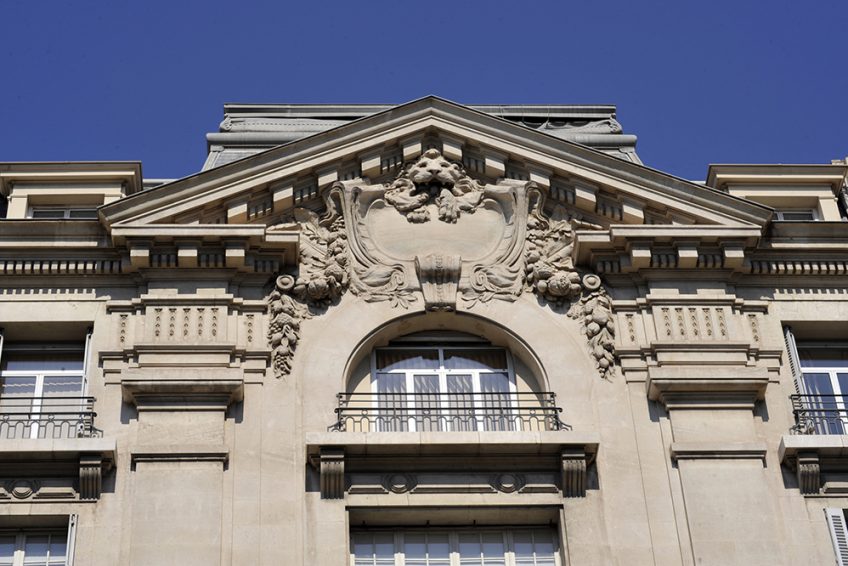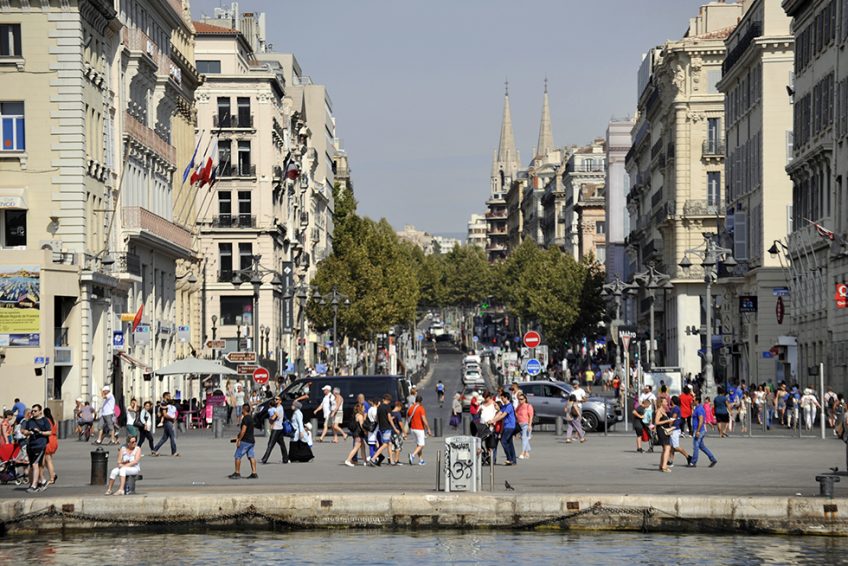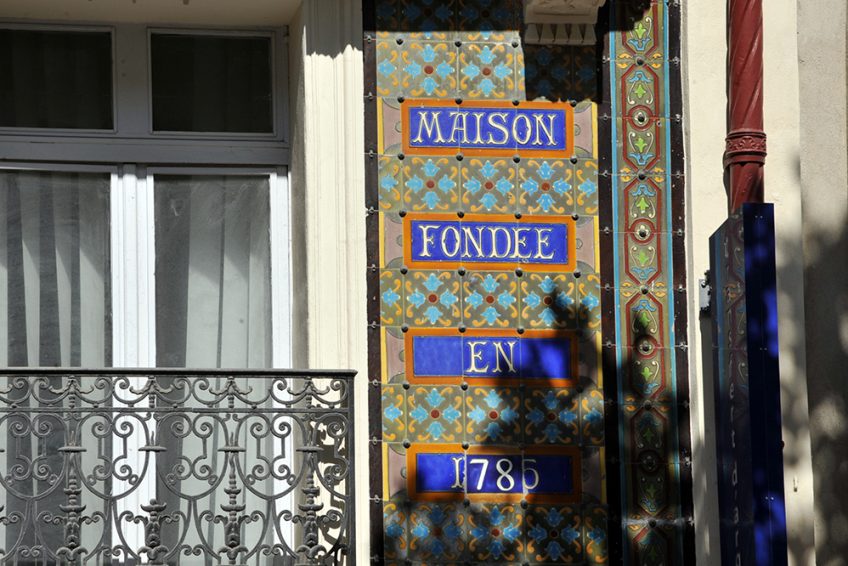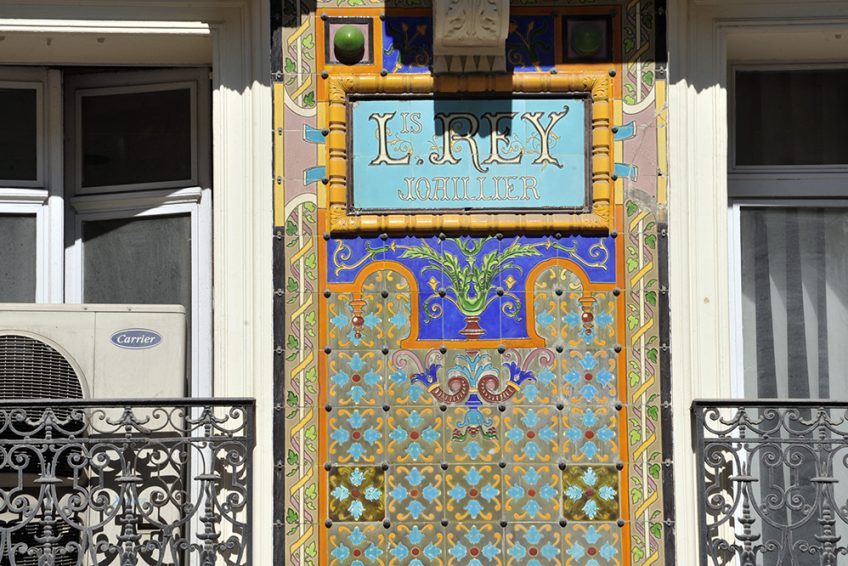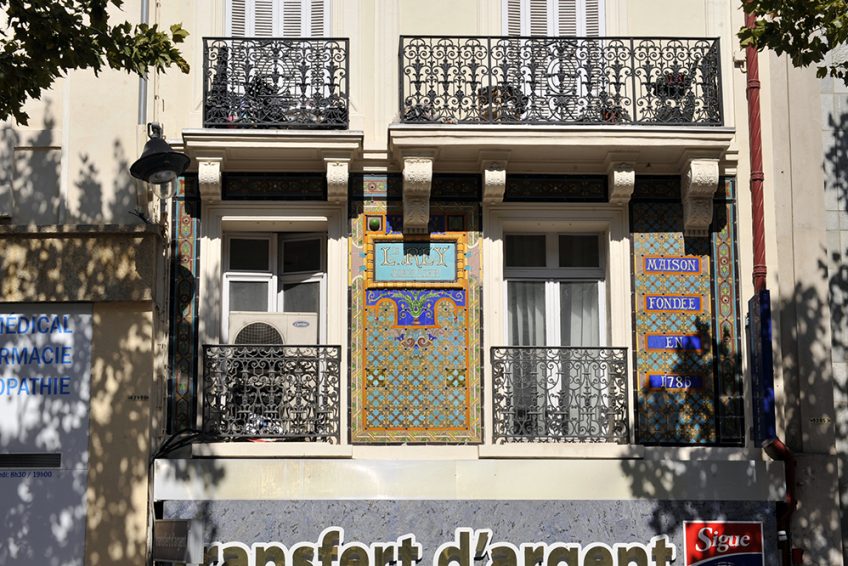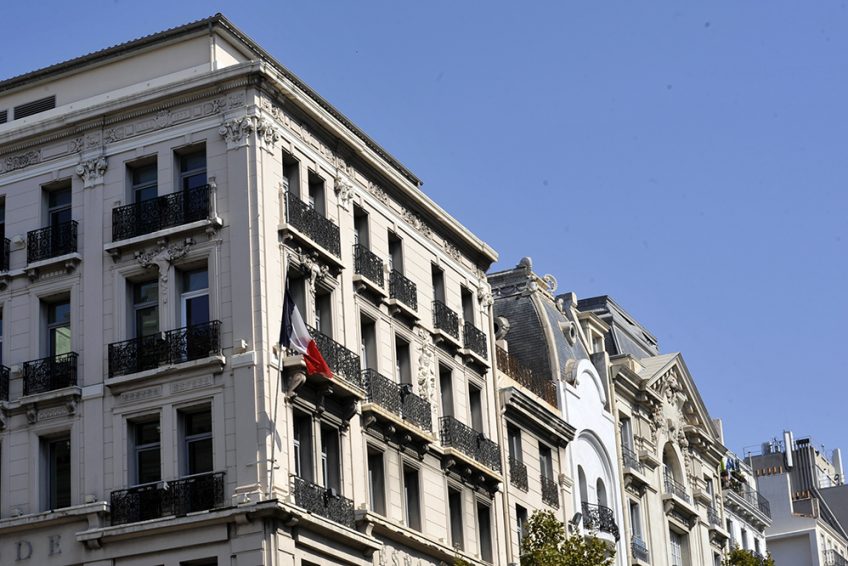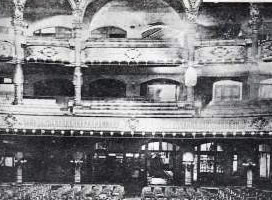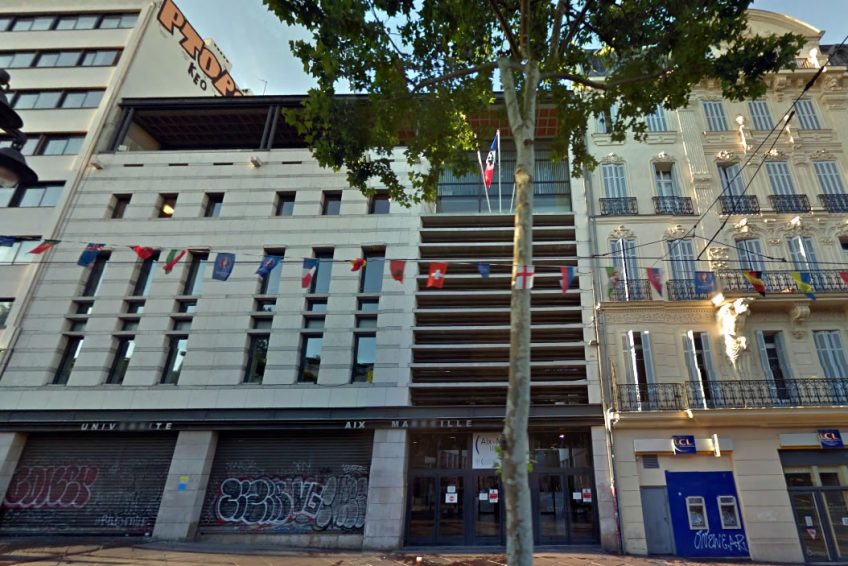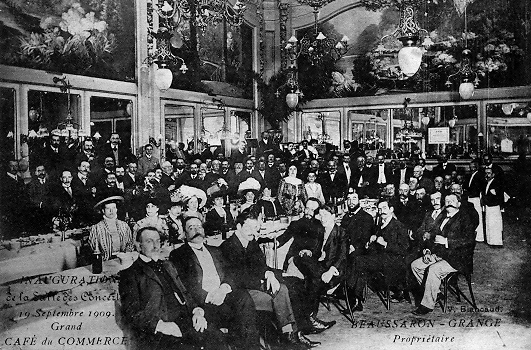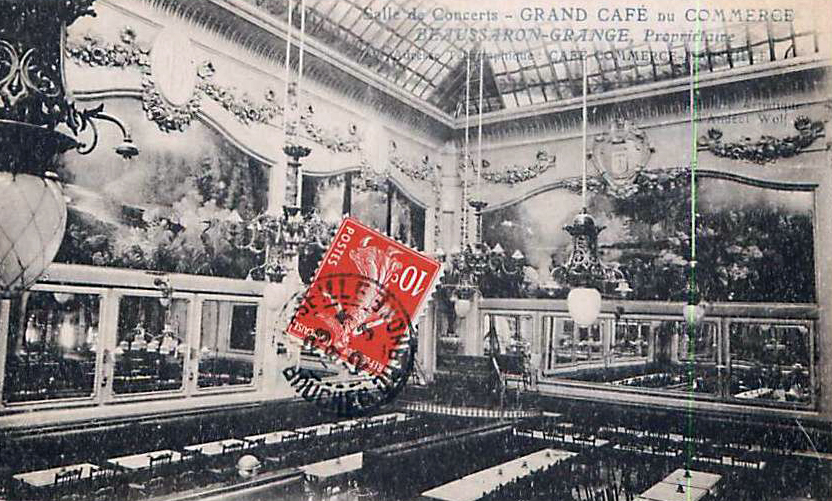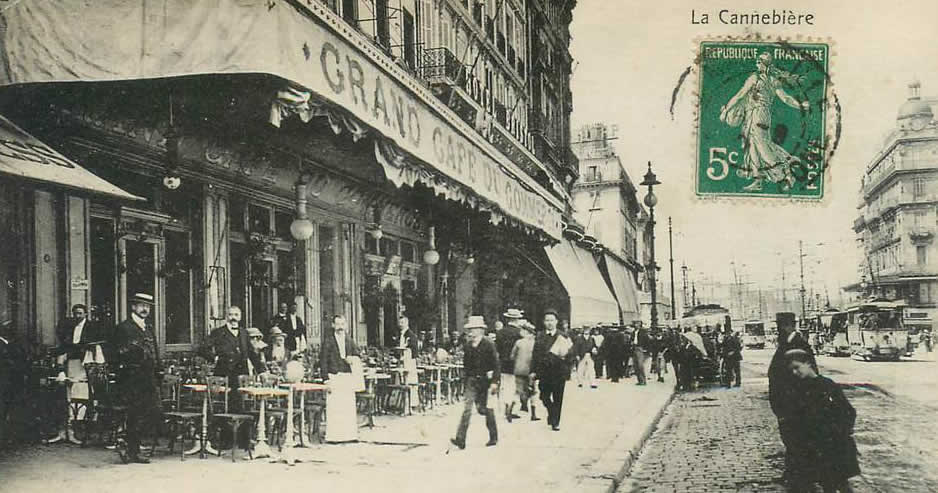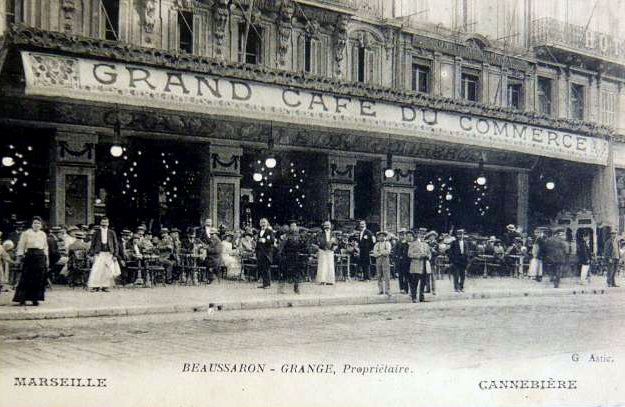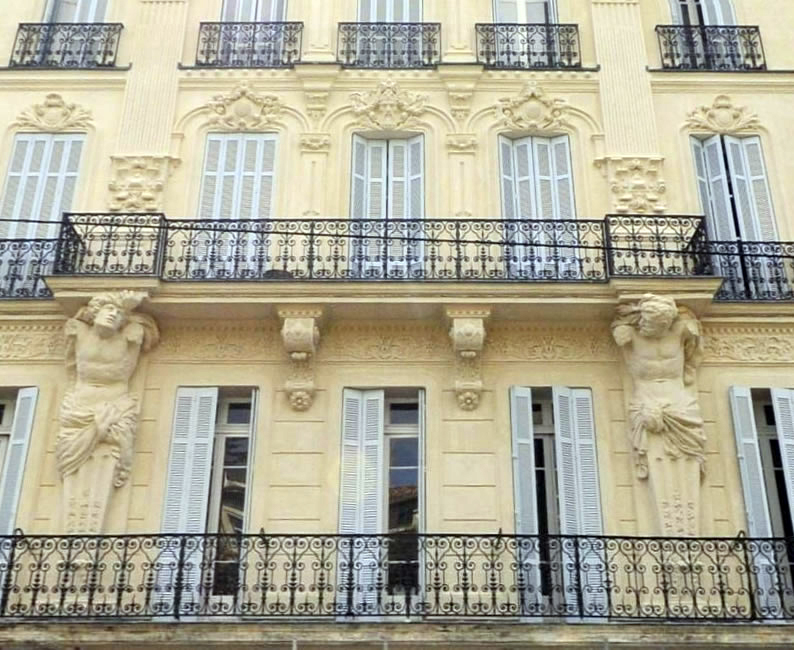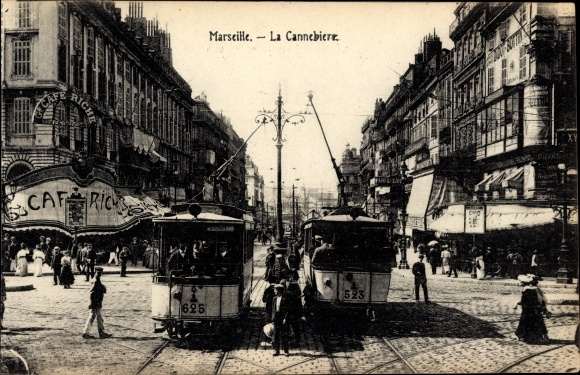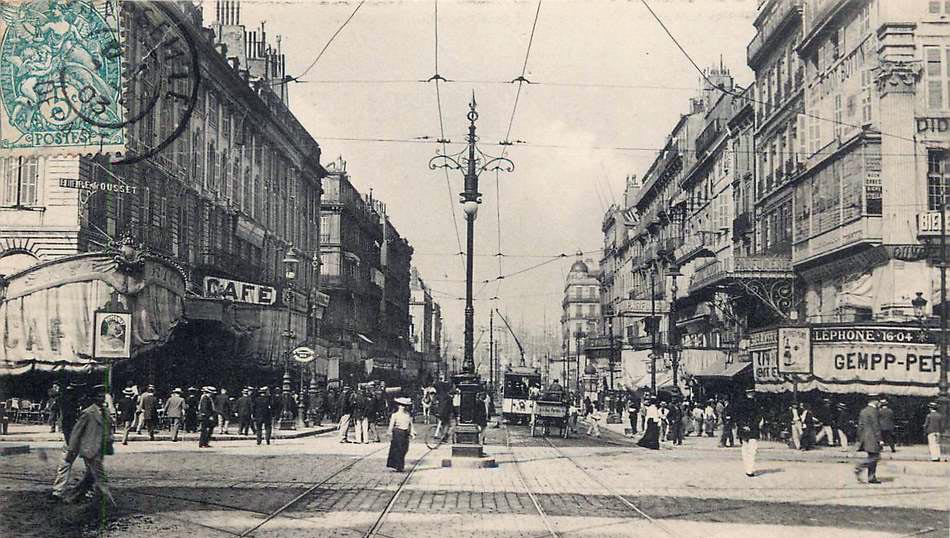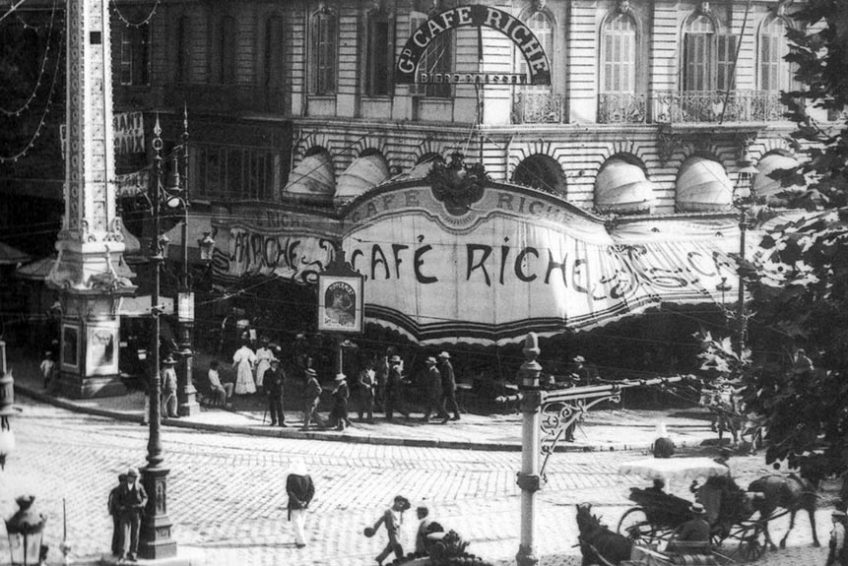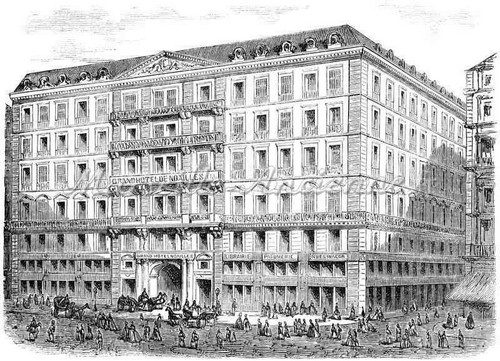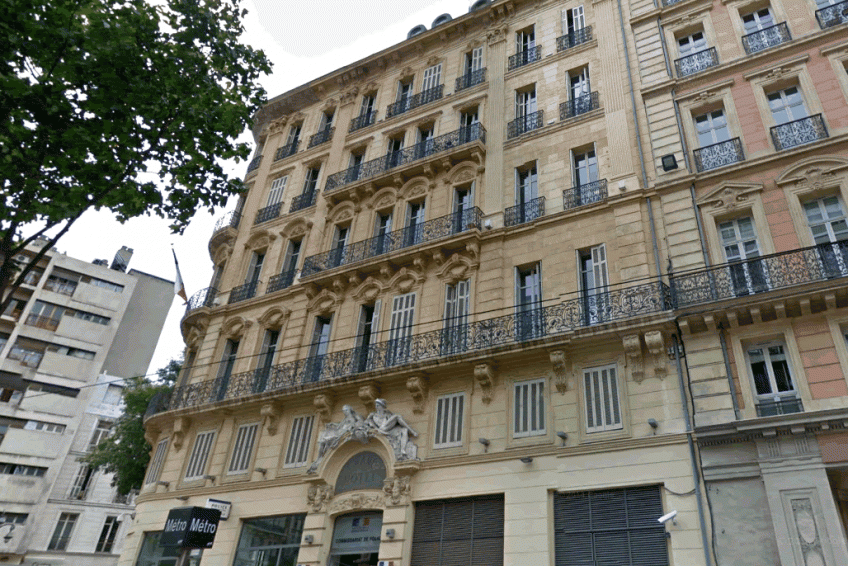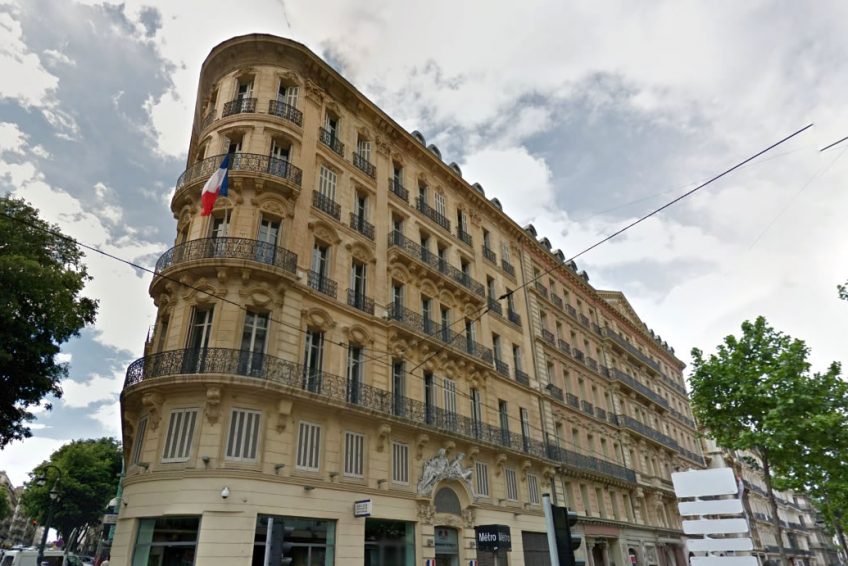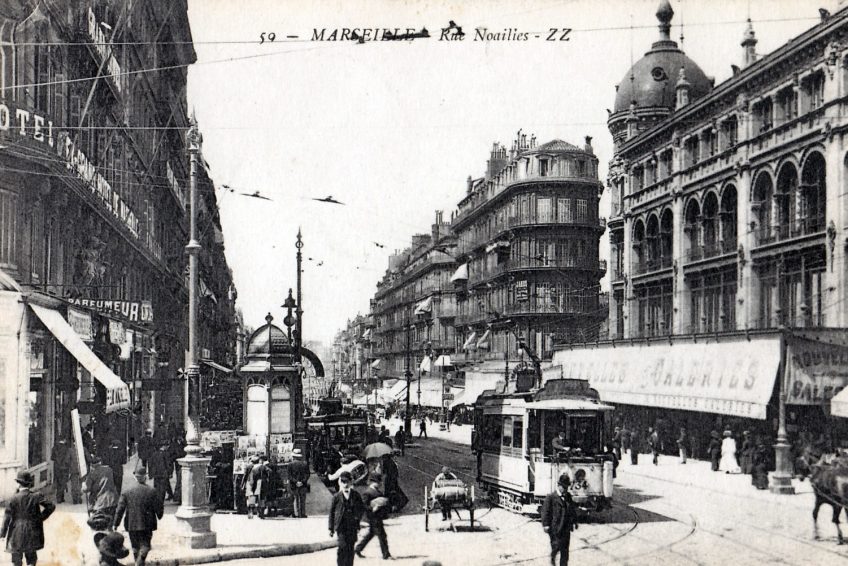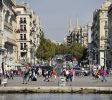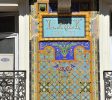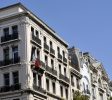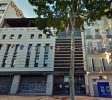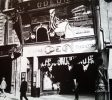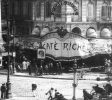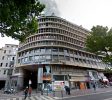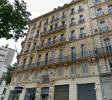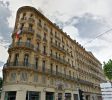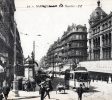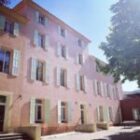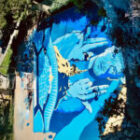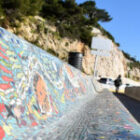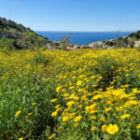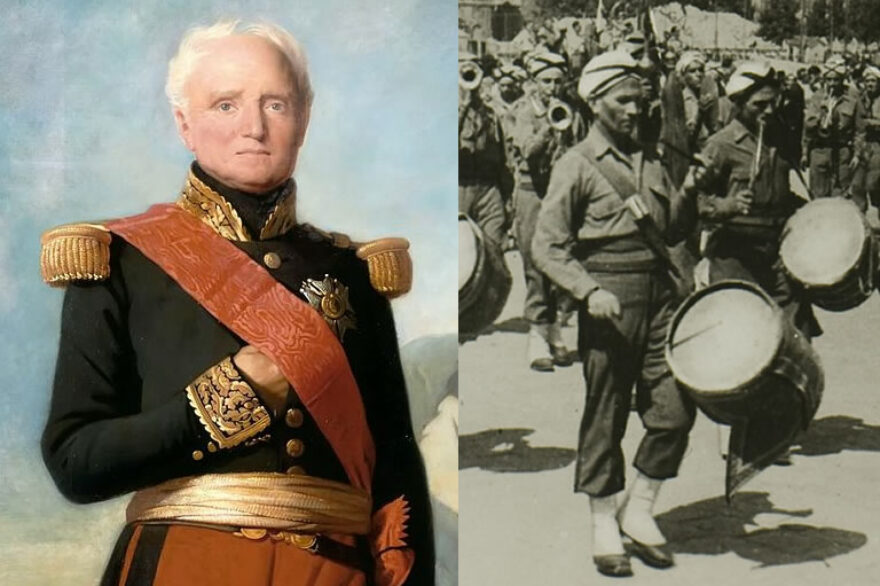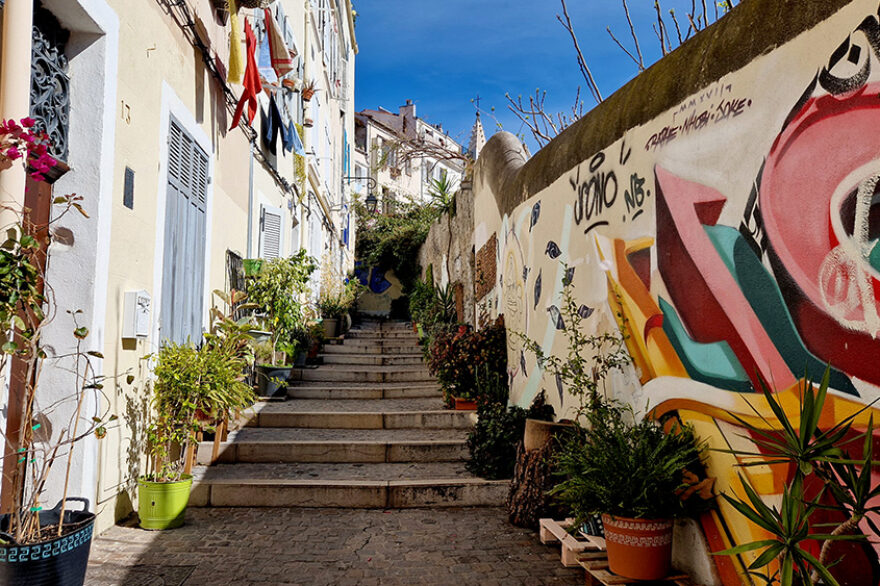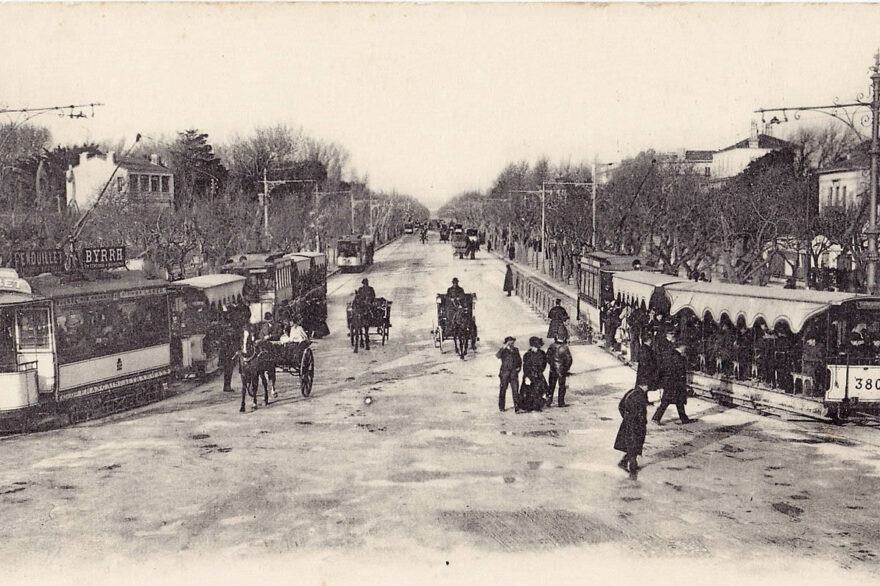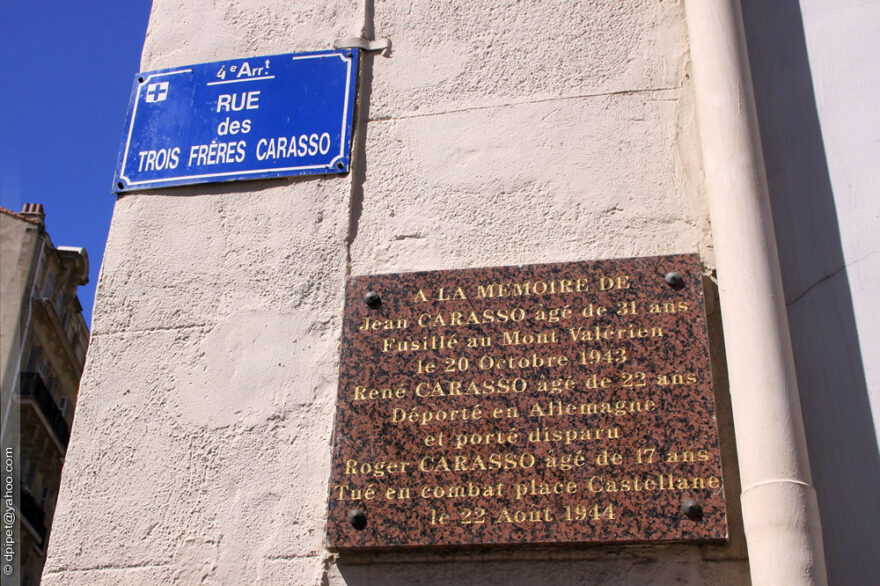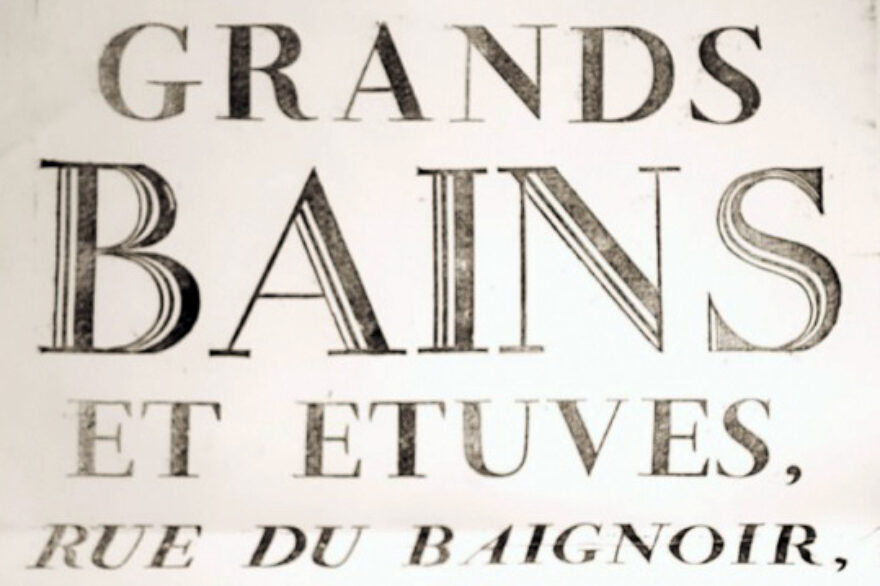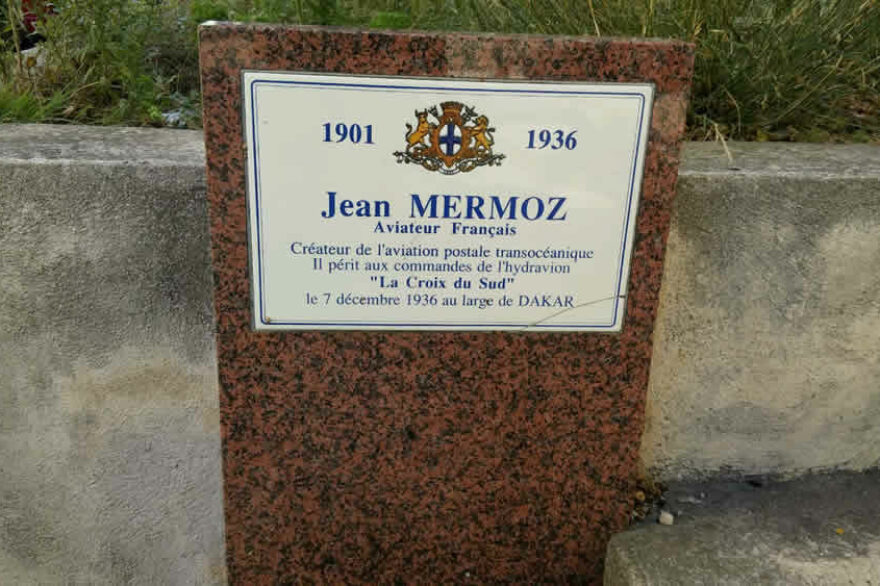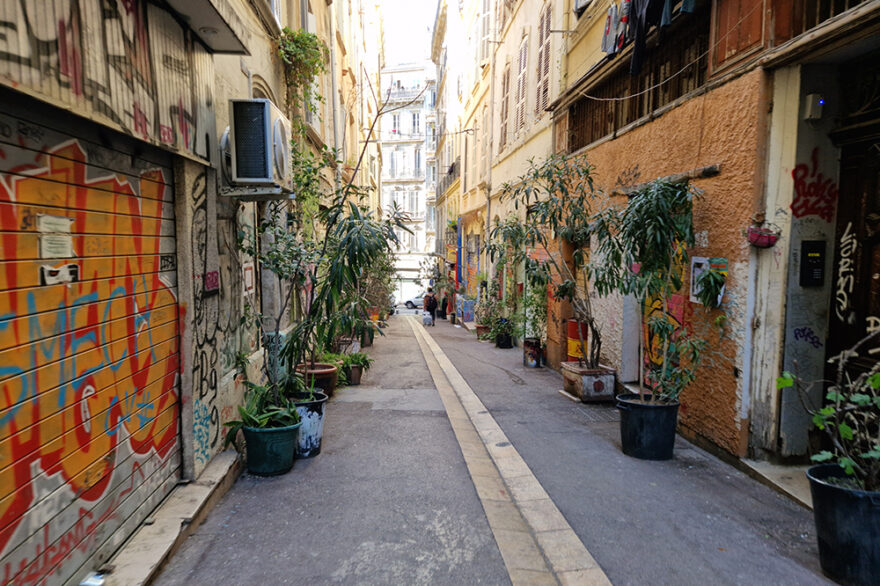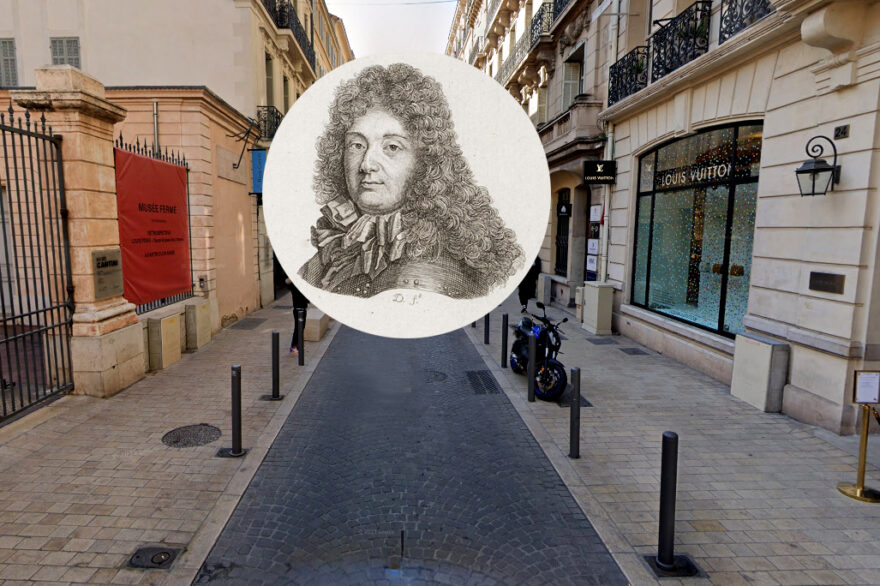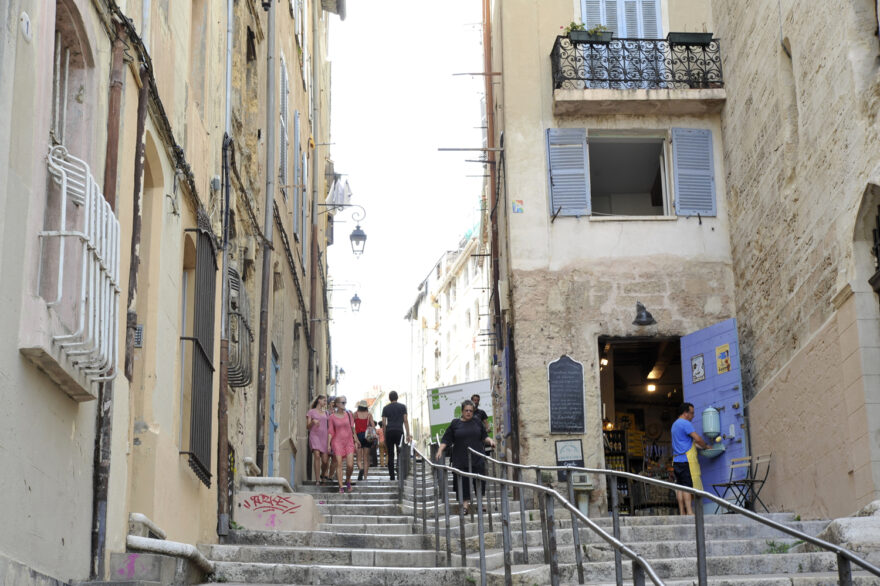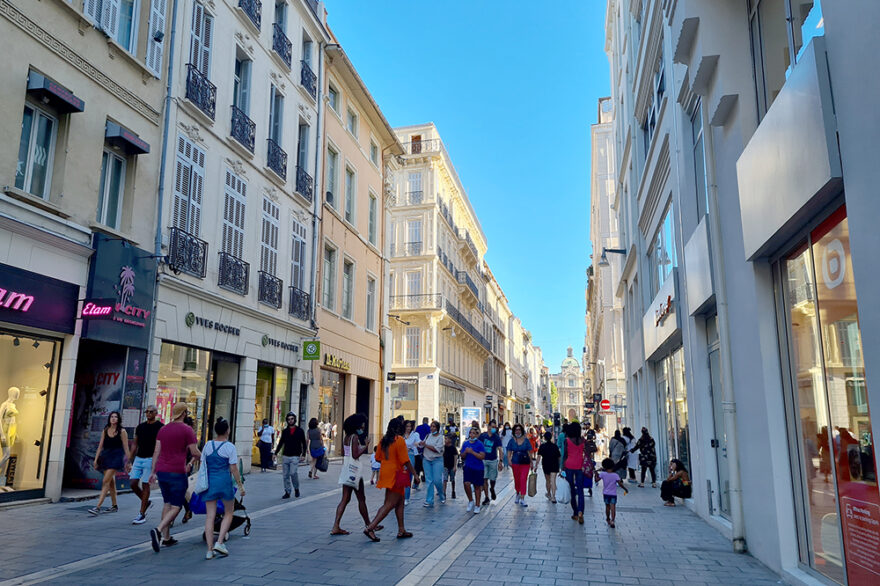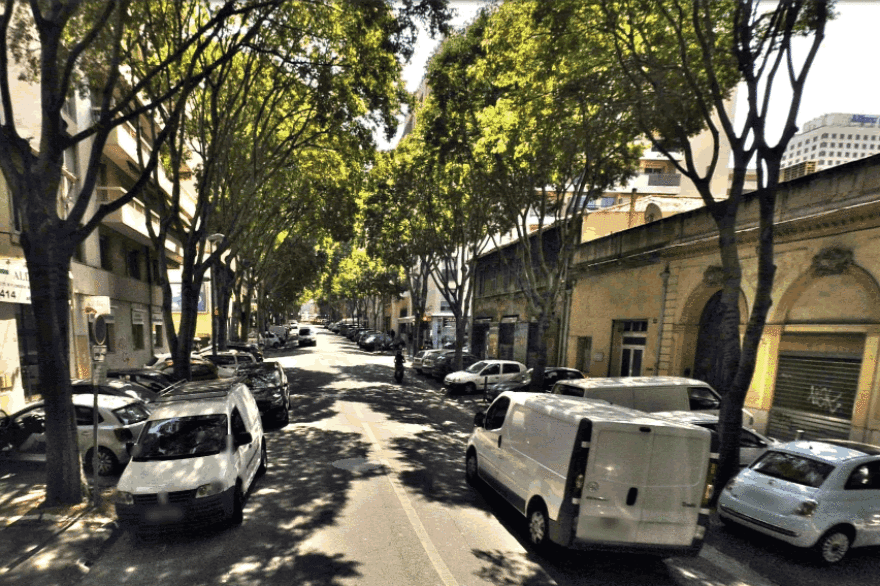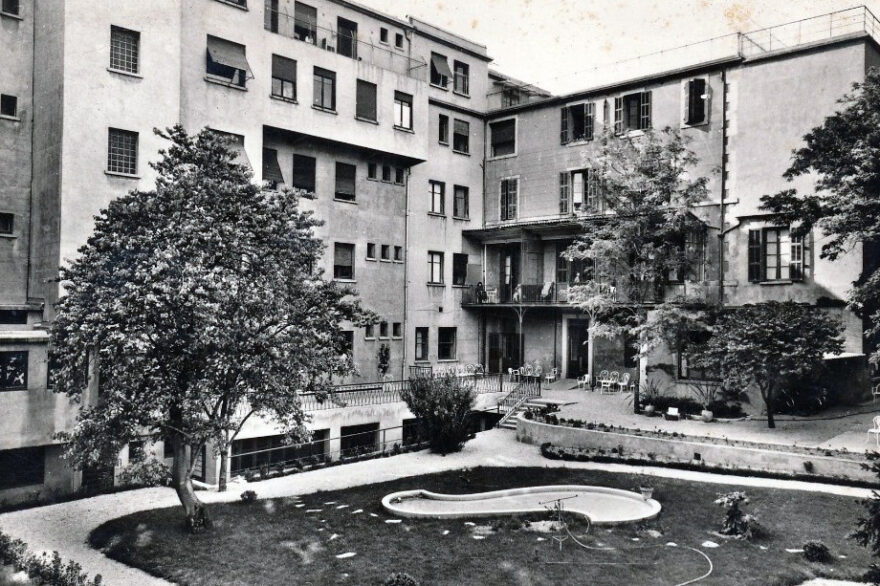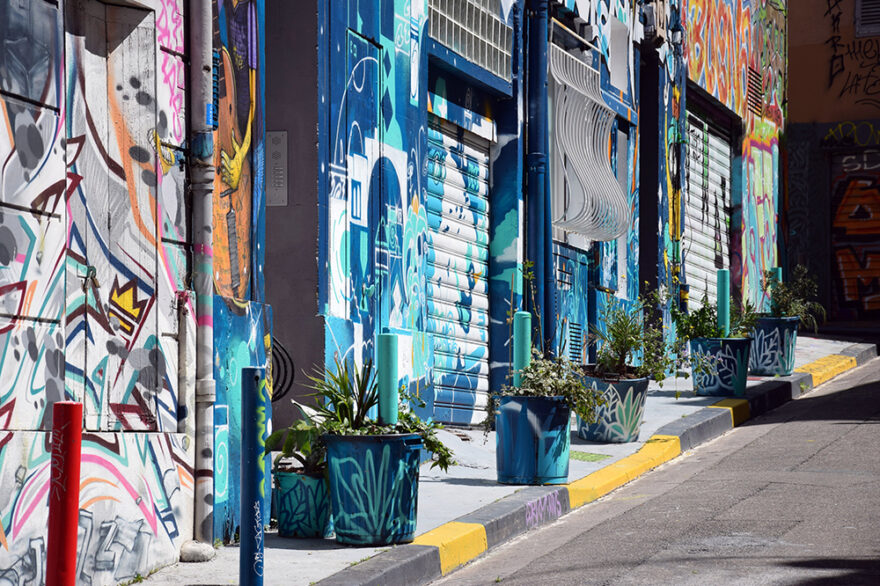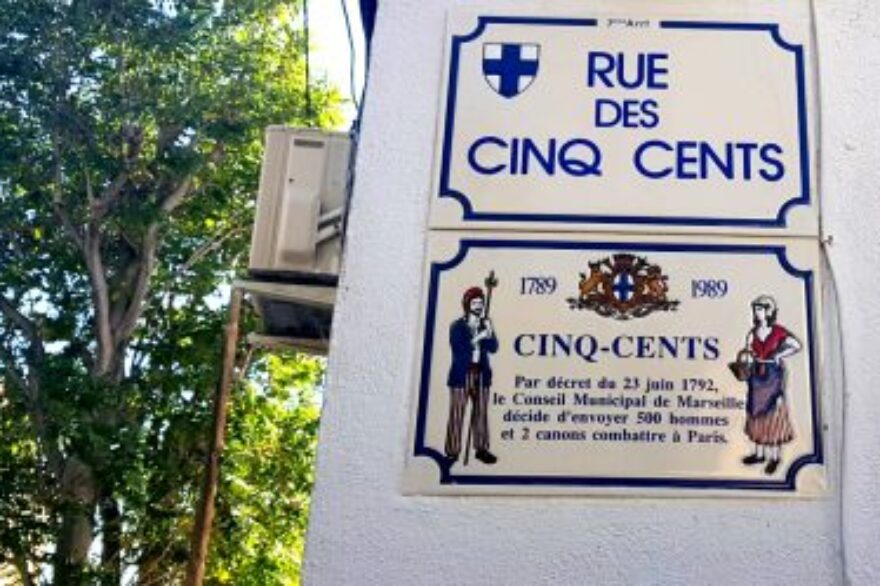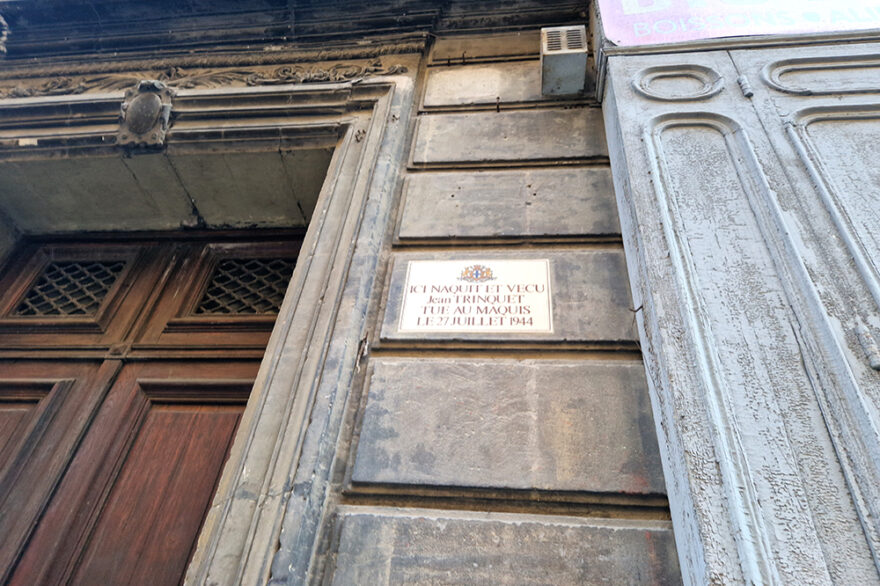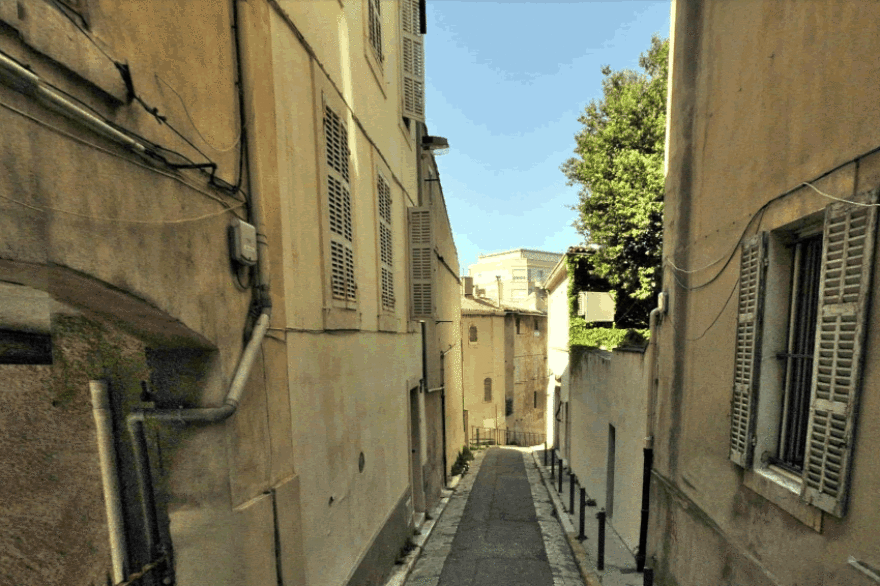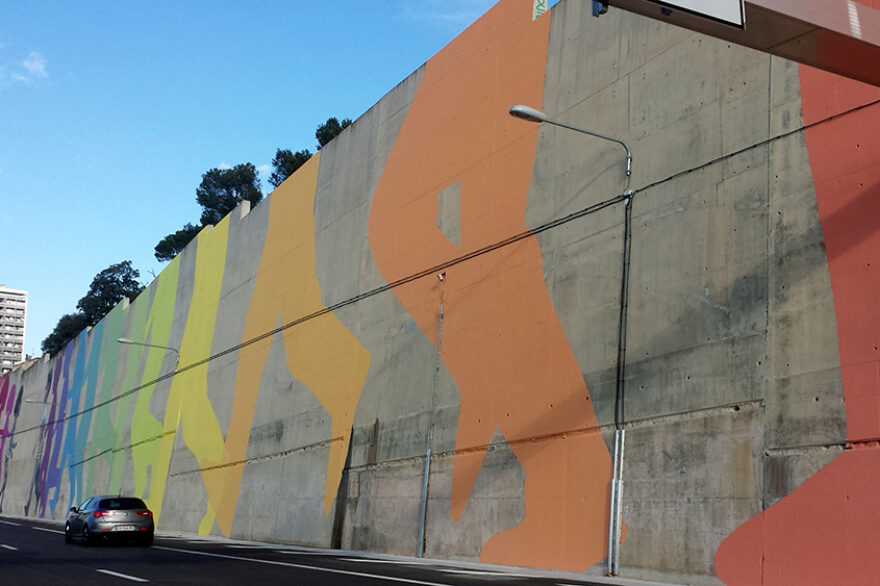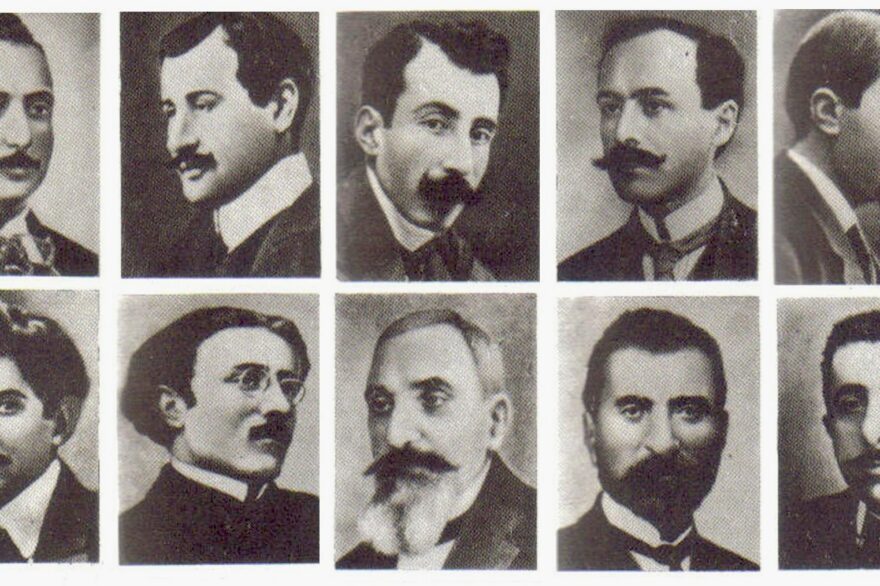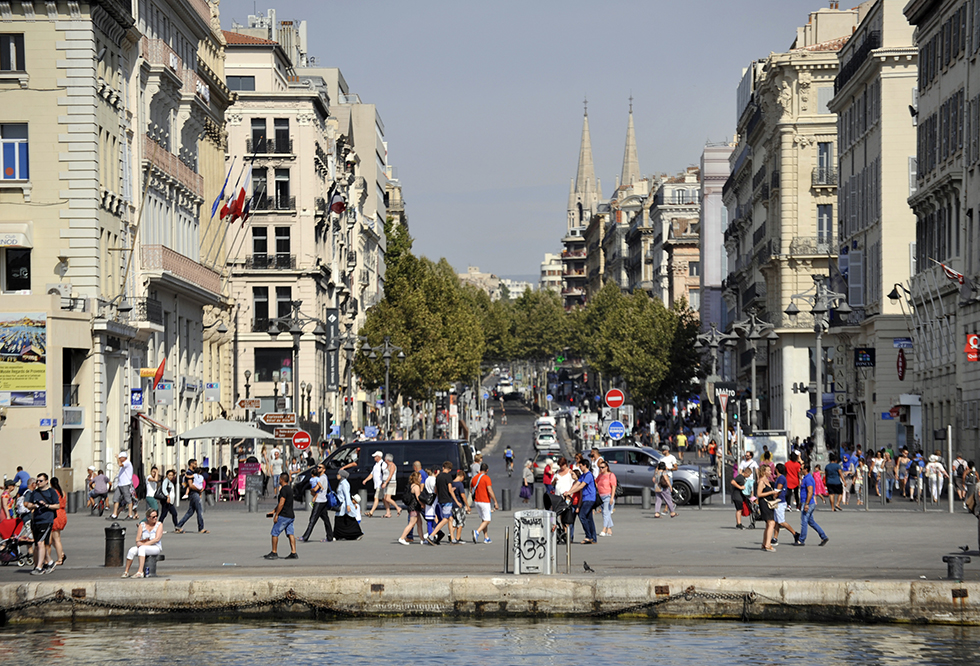
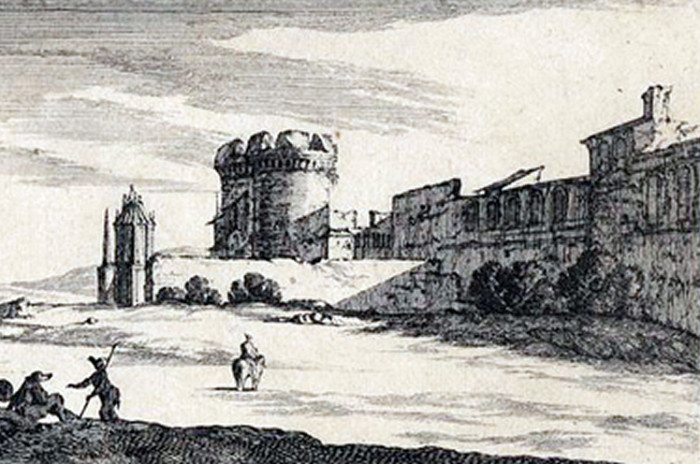
The Porte Réale in 1620 marking the entrance to the city
Originally, a thalweg collected water from the Saint-Bauzile, Reynier, Loisir and Poussaraque springs as well as rainwater descending from the Longchamp plateau and the Saint-Michel plain. The waters are lost in the marshes that occupy the bottom of the Canebière, between the current Quai des Belges and the Place Charles de Gaulle. From the XNUMXth century, the place took the name of Fourmiguier map. In 1296, the Count of Provence, Charles II obtained a concession from the city to set up shipyards there. In the XNUMXth century, King Louis XIV ordered the extension of the city, as well as the installation of the Arsenal of the galleys. This settles on the Fourmiguier plan, the builders then move to the south-east shore of the port, the ropemakers settle on Corderie street. In 1660 the Real door the main entrance to Marseille until the end of the 1666th century was destroyed, as were the city walls in 23 and the marketing of land in the new districts began. Initially named rue Saint-Louis by the promoter of the project, the first mention of the name of Canebière appears, on April 1672, XNUMX, in a deliberation of the Council held by the Bureau des Affaires de l'Agrandissement responsible for selling the land, drawing up and to carry out the urbanization plans.
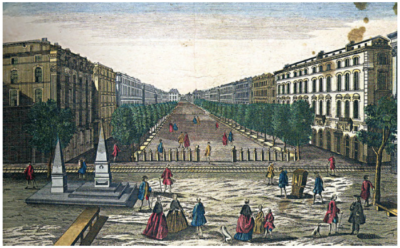 Originally, the street was between the course Saint-Louis and the arsenal of the Galleys. 250 meters long and 11 meters wide, it is bordered to the south by the Petit Jeu de Mail, an old version of the game of croquet. The first houses (now destroyed) were erected in 1671 at the corner of Canebière and Belsunce course. In 1727, rows of trees were planted, transforming the street into a promenade. This is where the fruit and vegetable markets are held, but it is also where the pillory is installed, which is used to perform the high and low works. Between 1743 and 1751 the buildings between the rue Saint-Ferréol and the course Saint-Louis. Luxury shops are set up (perfumer, bookstore, confectioner, etc.). Sidewalks are laid out in terceaux, solid bricks laid on edge. In 1785, the arsenal of the galleys was decommissioned allowing the extension of the Canebière to the Old Port. During the revolution, the guillotine was installed near Place Charles-de-Gaulle. In 1853, some of the buildings were destroyed, knocked out of alignment.
Originally, the street was between the course Saint-Louis and the arsenal of the Galleys. 250 meters long and 11 meters wide, it is bordered to the south by the Petit Jeu de Mail, an old version of the game of croquet. The first houses (now destroyed) were erected in 1671 at the corner of Canebière and Belsunce course. In 1727, rows of trees were planted, transforming the street into a promenade. This is where the fruit and vegetable markets are held, but it is also where the pillory is installed, which is used to perform the high and low works. Between 1743 and 1751 the buildings between the rue Saint-Ferréol and the course Saint-Louis. Luxury shops are set up (perfumer, bookstore, confectioner, etc.). Sidewalks are laid out in terceaux, solid bricks laid on edge. In 1785, the arsenal of the galleys was decommissioned allowing the extension of the Canebière to the Old Port. During the revolution, the guillotine was installed near Place Charles-de-Gaulle. In 1853, some of the buildings were destroyed, knocked out of alignment.
In 1854, the construction of the Palais de la Bourse which hosts the Chamber of Commerce. This one, created in 1599 by the merchants, sat until then at theHôtel de Ville. In 1857, the City Council decides that the Canebière will be 30 meters wide. The houses were demolished and others were rebuilt, the majority of which still exist today. From 1857 to 1927, the street was called Cannebière.
Rue Noailles
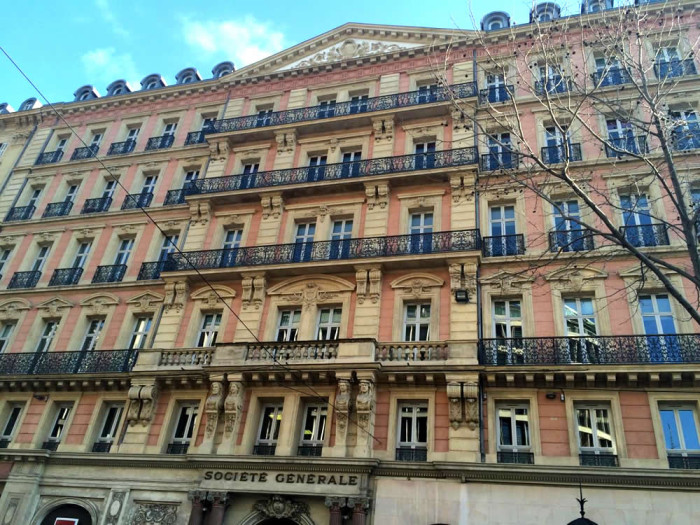 It was created at the same time as La Canebière, in 1666. Located between the Cours Saint-Louis and the Porte des Remparts, it was inhabited by large families who thus gave it its first name, rue des Nobles. The galley builder, Jean-Baptiste Chabert, built a mansion which he rents to Jacques de Noailles, lieutenant of the galleys. Its name remains attached to the street, to the square that extends it and to the gate of the ramparts. In 1859, the municipal council voted to widen the street from 8 meters to 30 meters. To allow it, the beautiful residences of the nobles who gave its first name to the street, are destroyed. Nevertheless, the house located at the corner of Cours Saint-Louis was not destroyed, only its facade was redone to be in alignment. In 1863 are built theLouvre and Peace hotel, and the Grand Hotel and 1865 the Grand Hotel de Noailles.
It was created at the same time as La Canebière, in 1666. Located between the Cours Saint-Louis and the Porte des Remparts, it was inhabited by large families who thus gave it its first name, rue des Nobles. The galley builder, Jean-Baptiste Chabert, built a mansion which he rents to Jacques de Noailles, lieutenant of the galleys. Its name remains attached to the street, to the square that extends it and to the gate of the ramparts. In 1859, the municipal council voted to widen the street from 8 meters to 30 meters. To allow it, the beautiful residences of the nobles who gave its first name to the street, are destroyed. Nevertheless, the house located at the corner of Cours Saint-Louis was not destroyed, only its facade was redone to be in alignment. In 1863 are built theLouvre and Peace hotel, and the Grand Hotel and 1865 the Grand Hotel de Noailles.
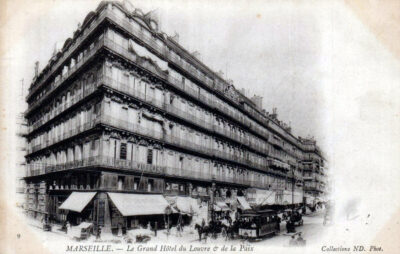 Hotel du Louvre and Peace : This palace has 179 rooms and private lounges. It welcomes, among others, Mark Twain in 1867, Camille Flammarion or the Emperor of Brazil Pedro II. This building was occupied from 1941 to 1977 by the French Navy. The facade is decorated with 4 statues each holding the symbol of one of the four continents. The floors bear the coats of arms of European nations, that of Austria-Hungary was destroyed during the 1914-1918 war. The facade, the roof, the staircase and on the ground floor, two lounges: the officers' mess and the conference room have been classified as historical monuments since June 8, 1982.
Hotel du Louvre and Peace : This palace has 179 rooms and private lounges. It welcomes, among others, Mark Twain in 1867, Camille Flammarion or the Emperor of Brazil Pedro II. This building was occupied from 1941 to 1977 by the French Navy. The facade is decorated with 4 statues each holding the symbol of one of the four continents. The floors bear the coats of arms of European nations, that of Austria-Hungary was destroyed during the 1914-1918 war. The facade, the roof, the staircase and on the ground floor, two lounges: the officers' mess and the conference room have been classified as historical monuments since June 8, 1982.
The Grand Hotel. Built on part of the mansion that Jean-Baptiste Chabert had built and which he rented to the lieutenant of the galleys Jacques de Noailles, it is located at the corner of the Cour Garibaldi. It welcomes many celebrities including Gandhi in 1931. Charles Trenet made his debut there in the hotel cabaret. Closed in the 1990s, it was transformed into a central police station.
Le Grand Hotel de Noailles also built on the site of Jean-Baptiste Chabert's former hotel, it has become the headquarters of a bank.
The Alleys of Meilhan
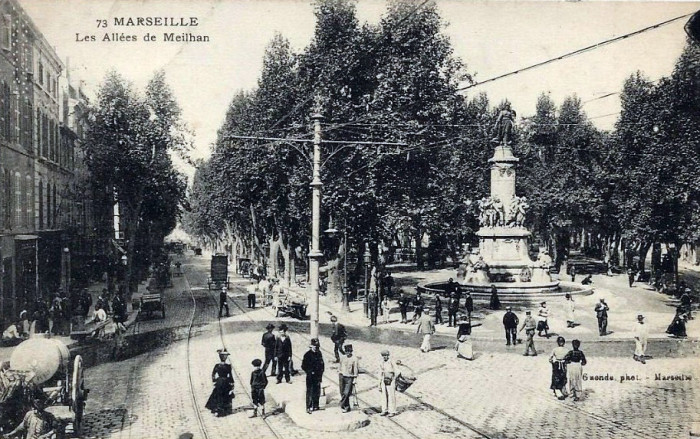 Outside the city walls, plans for expanding the city include a promenade. This one was created in 1733, it runs along the convent of the nuns of penance of the third order of Saint-François or Lyonnaises which gives its first name to the walk.
Outside the city walls, plans for expanding the city include a promenade. This one was created in 1733, it runs along the convent of the nuns of penance of the third order of Saint-François or Lyonnaises which gives its first name to the walk.
With the help of Gabriel Sénac de Meilhan, intendant of Provence, the aisles were completed in 1775. They then took his name in thanks. Place for walking, a bandstand and guinguettes are installed there allowing banquets and political meetings.
Many fairs take place there:
from 1839 to 1860, the Saint-Lazare fair, transferred to the Place Saint-Michel (today. Place Jean-Jaures, known as the Plain).
from 1850, the herb and aromatic plant fair, which has since become the garlic and tarraïettes fair.
1883 in the santons fair which has been held since 1803 on the Cours Saint-Louis is held for the first time on the Alleys of Meilhan on the occasion of Christmas.
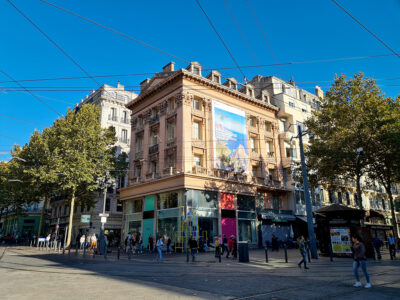
In the alleys is the source of the Poussaraque. During the construction of the Allées Léon-Gambetta car park, a salvage chamber dating from the XNUMXth century was unearthed. This collected all the water from the surrounding springs (Saint-Bauzile, Reynier, Loisir, Poussaraque) as well as rainwater descending from the Longchamp plateau. They were led through a collector to the Great Well located near the Cours Belsunce.
The reformed Augustins, settled in Marseilles since 1605, built their convent in the Saint-Bauzille district in 1611. The chapel was destroyed on November 30, 1869, after the construction of theSaint-Vincent-de-Paul church, called the Reformed.
Facing the Church, since 1894, is the mobile monument, work of the sculptor Constant Roux and which celebrates the soldiers of the Mobile Guard, a corps of reservists mobilized by the government during the Franco-Prussian War of 1870. It has been highlighted since the end of 2012. The project is the work of Bastien Leandri , lighting designer for the City of Marseille.
At the corner of Cours St Louis and La Canebière is the oldest building on the avenue, The House of Figaro designed by architect Pierre Pavillon and built by Jean-Claude Rambot in 1675.
The alleys of Meilhan will be named successively:
Course of Lyonnaises
Alleys of Meilhan
Field of Dix-Août, during the French Revolution
Alleys of Meilhan, early XNUMXth century
Canebière since 1927
La Canebière after 1927
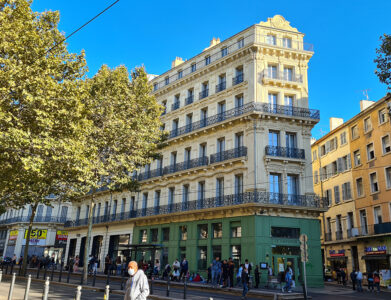 In 1927, the city council decided to unite the three streets and give them the single name of Canebière. He also decides to remove the word street. The numbering has been changed, starting from the Quai de la Fraternité (formerly Quai des Belges).
In 1927, the city council decided to unite the three streets and give them the single name of Canebière. He also decides to remove the word street. The numbering has been changed, starting from the Quai de la Fraternité (formerly Quai des Belges).
On October 9, 1934, facing the Palais de la Bourse, King Alexander I of Yugoslavia and the French Minister of Foreign Affairs, Louis Barthou, are the victims of a attack by a Macedonian nationalist.
On October 28, 1938, the store fire New Galleries leads to the death of 73 people. Following this fire, the mayor, Henri Tasso, was dismissed; Marseille is placed under the supervision of the State and directed by an extraordinary administrator, having the rank of prefect. The municipal body of firefighters of the city of Marseilles which did not manage to put out the fire is dissolved. The battalion of marine firefighters was created on July 29, 1939, to replace it and protect the city.
The University Institute for Teacher Training (IUFM), the Faculty of Economics and Management and the Faculty of Law are located on the Canebière.
June 30, 2007 sees the return of the tramway. At the corner of La Canebière, Cours Saint-Louis and Cours Belsunce is the zero point of Marseille allowing the calculation of the distance from Marseille to Paris, as well as the numbering of buildings. In 2019, the pedestrianization of the bottom of the Canebière was launched.
Marseille has always been known to sailors from all over the world, thanks to its port. The English-speaking sailors of the early 1935th century translated “Canebière” as can-o-beer, can of beer, because of the many drinking establishments lining the artery. A song was written in XNUMX by René Sarvil (lyrics) and Vincent Scotto (music), which was used in an operetta and two films.
